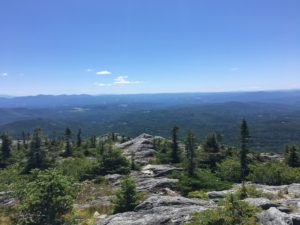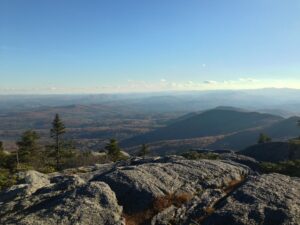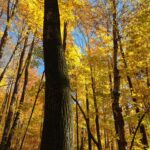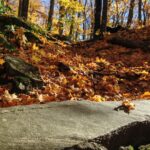https://www.google.com/maps/d/edit?hl=en&hl=en&mid=12qGoyhqebdcGzbUqFCZqp2KDwA9rANIO&ll=44.395250166646804%2C-72.6451146&z=11


Source: source
Mount Hunger is a special place because it is a short but intense hike with a great reward. The first time I came here I was very taken away by how the land opened up. You can see the Vermont landscape and the impacts we humans have had on it from a uncommon perspective. The view also allowed me to see the beauty of the land. I hiked this trip up once in the summer and again this fall before the first snow fall. I got to see the contrast from the change in seasons. In addition, I was able to observe how different Mount Hunger is from my phenology place near Burlington.
Description of Mount Hunger in the style of Aldo Leopold:
The changes that make noises in November comes in a hurry. As I am standing on top of Mount Hunger with cold hands and a numb face, the wind continued its strong plummet. As the wind picked up I could see its strong influences in the nature of this magnificent place. The way the trees fluttered, humans hug themselves tight in anticipation of it, and the ability of the wind to pick up seeds and other small objects in its path showed me that it is a force to be reckoned with. Nature is a force to be reckoned with.
I heard noises amidst the silence that seemed to echo about the whole mountain. Pretty soon, a family emerged as they reached the pinnacle of their hike with their golden retriever. Just like me a while ago, they paused realizing they did not come to the view, but the view had just come to them. The Earth, the mountain, and the sky opened up before them into a magnificent twisted jungle of trees with colors beyond imagination.
Pretty soon, the family settled into their spot on the opposite side of the mountain facing away from the wind. The world returned to the way it was ten minutes ago and probably ten thousand years ago. The peaceful quiet took back its rightful place, and all was calm in the world ago.
Comparison of Place to Burlington Area in the Style of Edward Abbey:
“The wind will not stop”. I can say that for both of my phenological spot in Essex Junction and on top of Mount Hunger. The extremity of one is greater than the other. The wind on top of the Mountain was cutting. On the other hand, the wind in Essex Junction was soft and caressing. Needless to say, the wind is a strong and important force of nature no matter where.
The view was enormous in radius compared to that of the tiny stream. An abundance of short conifers occupied the area, and there was a lack of hardwood trees. Much different can be said for Essex. The elevation of the mountain plays a role in this ecological difference. The wind beats down on the trees making them grow shorter as an adaptation. In addition, the lack of nutrients in the ground makes this a more suitable environment for conifers. However, the forest floor gets a supply of nutrients from the rich ground, making hardwoods a more ideal species to grow in that area.
A bird was spotted as the descent up the mountain began. I was unable to identify it, but it was small and gracefully transitions from one tree to another




